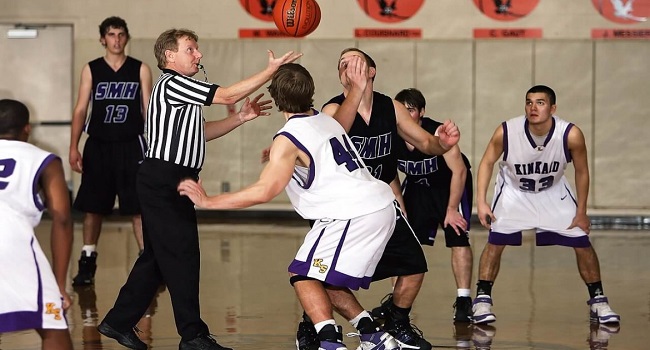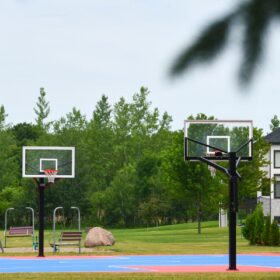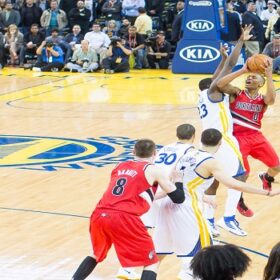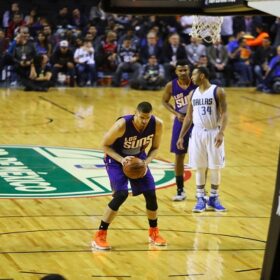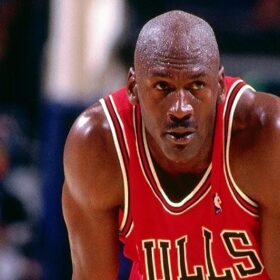Like every other sport, basketball is based on rules as well. The teams, as well as the players, have to play by the rules. If any rules are broken while playing the game, it can result in fouls or violations.
In every basketball match, few players commit fouls and violations. It can change the course of the match.
These rules are made to keep the game fair for all and maintain dignity while playing. It gives equal opportunity to both the teams.
For example, the goaltending violation gives equal opportunity to tall as well as a short player. As per this violation, a tall payer can take undue advantage of their height while playing.
Players can end up in big trouble if they go on committing one foul after another. They can be “foul out” if they commit a certain number of fouls.
There are many different types of fouls and violations in basketball. The referee uses hand signals to declare a foul or violation, which can often confuse the audience.
Today, in this article, we will help you understand the common types of fouls and violations in basketball.
What Are The Types Of Fouls In Basketball
Now that you know about fouls and penalties, it’s time to learn about the kinds of fouls in basketball.
Here we will discuss all the different types of fouls in basketball.
Personal Foul
It is the most common type of foul in basketball. In every game, you will come across one of two personal fouls. As the name goes, this foul happens during personal contact.
When two opposing players engage in the game, and it results in illegal contact, it is a personal foul. Sometimes this foul is intentional while other times, it happens in the heat of the moment. Most of the personal fouls are always called against the defense.
When the player of the team who has possession of the ball commits this foul, it is called an offensive foul. In rare cases, you will come across offensive foul. When it is difficult to pint out which team has the possession of the ball and this foul is committed, it is called a loose-ball foul.
Instances of Personal Foul
Here are some cases of personal fouls in basketball.
- Holding: When a player stops the opponent from moving by holding them.
- Illegal Screen/Pick: If the player doesn’t maintain the position while setting screen or pick.
- Hand Check: The defender usually commits this foul. It happens when they continuously stop the opponent by using their hands.
- Illegal hand Use: it is similar to holding. When a player touches the opponent’s hands or arms illegally, it is considered a personal foul.
- Tripping: It happens when a player uses their leg or foot to trip the opponent.
- Elbowing: A player uses their elbow to hit another player.
- Charging: A defender stands in front of the opponent, and the offensive player touches the defender. If the defender is standing outside the charge circle, it is foul.
- Blocking: When the defender is not positioned inside the charge circle and still makes contact with the offensive player.
Technical Foul
Technical foul doesn’t involve personal contact. It can be made against anyone in the game, including the teams, players, and coaches. Here are the instances of a technical foul.
Instances of Technical Foul
- Unsportsmanlike Conduct: When the players or coaches show unsportsmanlike conduct like taunting the other team, using profane language towards any of the officials.
- Personal foul + Foul Out: It happens when a player who is fouled out of the game plays because of a lack of substitutes and still commit a personal foul.
- More Timeout: When the team has used all their allotted timeout, but still calls for a timeout.
- Illegal Gamesmanship: When the game is delayed.
- Illegal Defense: When the players are arranged in illegal defense.
In Illegal Gamesmanship and Defense, a referee typically gives a warning instead of calling a technical foul.
Flagrant Foul
A player’s violent contact leads to Flagrant foul. It is unnecessary and excessive contact, which leads to the ejection of the player. The contact is brutal, harsh, cruel, and dangerous for a player. The contact can be deliberate or intentional. The player who commits these fouls can be removed from the game.
Team Foul
A team foul consists of all the fouls committed by the players in a team. All the different fouls are accumulated to count as a team foul. It only includes defensive fouls.
For example, players in Team A committed seven total personal fouls, so the Team Foul is 7.
Player Foul
A player foul is any foul committed by the player in a team. It mostly includes all the personal fouls and flagrant fouls committed by a single player in a team.
For example, Player A committed 3 Personal Fouls and 1 Flagrant Foul. So the Player Fouls are 4.
What Are The Types Of Violations In Basketball
Basketball violations are less severe and strict than fouls. A violation is mostly done on the offensive side rather than the defensive. Unlike fouls, there is no severe penalty for violations. Total violations are not counted as well.
Violation Penalty: There is only one penalty for violation.
Possession of Ball: If a player commits violation, the possession of the ball will go to the other team. If an offensive player commits violation, the ball goes to the defensive side.
Here are all the types of violations a player can commit in a basketball game.
Traveling Violation
Traveling violation happens when a player takes two or more than two steps between dribbling the ball. If a player moves with the ball without dribbling, it is a violation. Even switching the foot between dribble is a traveling violation.
Palming
This violation happens when the player has their palm too much on the basketball side while dribbling it. If their palm reaches underneath the ball, it is a violation also.
Double Dribble Violation
This violation happens when a player establishes their position by picking up the dribble and that dribbling the ball again. If a player uses two hands to dribble, it is violation too.
Held Ball
Here two-player battle briefly to get the possession of the ball. The referee will give the possession to one team, and if it happens again, the possession will be given to the other team.
Backcourt Violation
It happens when an offensive player brings the ball to the half-court line and then moves back with the ball to the mid-court.
Kicking Violation
This violation happens when a player kicks the ball intentionally or unintentionally.
Free Throw Violation
Every player should remain in their place till the ball is hot in a free throw. If the offensive player moves too fast, the shot will not count. If a defensive player moves too quickly, the offense team will get another shot plus point if it goes through the net.
Goaltending
Goaltending violation happens when a player interferes with a shot when it is in the downward motion and outside of the imaginary cylinder.
Three Seconds Violation
Three seconds violation happens if an offensive or defensive player stands in the key for 3 seconds or more.
5 Seconds Violation (Inbounding)
Once the referee hands the ball to a player, they need to inbound the ball within 5 seconds.
5 Seconds Violation (Offensive)
If a defensive player is within the arms reach, the offensive player needs to pass, dribble or shoot the ball within 5 seconds.
10 Seconds Violation
A player should advance with the ball towards the mind court within 10 seconds.
Final Words
These are the common types of fouls and violations in basketball. A player should try to avoid fouls and violations as they can easily change the game results. It is also a sign of bad sportsmanship.

